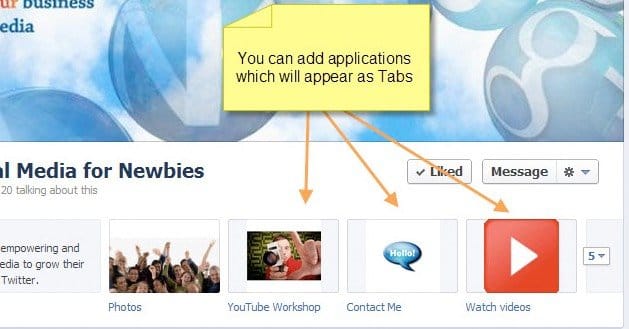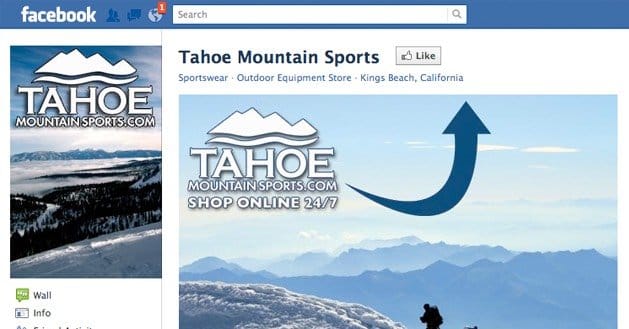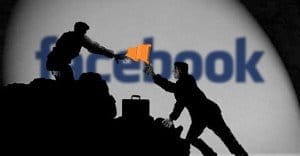 Written by ContentPowered.com
Written by ContentPowered.com
As a user, when was the last time you used a Facebook app? Now, if you eliminate the stray contest, when was the last time? For me, it was a heck of a long time ago; well over a year.
Now, as a business, how effective have your tab apps been? Have you even been using them? It seems like these days they’re only good for contests, and sometimes not even then. Half the time, it’s just easier to run a contest on your own site rather than through Facebook.
Are Facebook Apps Dead?
Well, by the strictest definition, Facebook apps aren’t dead. They still exist, and businesses still use them.
Now and then, a fun app comes out that hooks into Facebook and draws in millions of users. The Walking Dead used one to “dead yourself” in a push to try to zombify the world while hyping up the new season. Watchdogs, the PS4 game about hacktivism with an insanely huge budget and a hype train that derailed, had an app that skimmed your profile and made guesses about your life. It was pretty inaccurate for anyone with even the most basic privacy settings, but it was an interesting concept.
Beyond that, though, most businesses either never use apps, forget they exist, or use them for basic contests and noting more.
The Long Decline
Facebook apps didn’t just disappear overnight. They’ve had a long, slow decline since their glory days a few years back.
The first nail in the coffin was a couple of years ago. Back then, you could direct visitors, not to your homepage, but to a custom landing page inside a tab app. This page would direct the user to like your page in order to gain access to your content. It was essentially a landing page for your Facebook page; give them a value proposition, explain why they should like you, and hide any content until they do.
As an adaptation to this change, marketers learned how to direct ads at tab apps as landing pages. It only worked for visitors coming in through ads, but it was better than nothing, for a while.
The second stone cast at the body of the tab app was the overall realization that apps directed traffic away from the fan page itself. Fans would end up in apps, and might like the page from there, but they didn’t go back to see the page itself. Instead, they relied on Facebook’s algorithms to show them content they wanted to see. This was the same time Facebook’s organic reach really began to drop for businesses. Without paid promotion, a page would only see 15% of their visitors on any given message. Of course, today that 15% sounds like heaven for organic reach, but this was a different time.
The third hit was Facebook’s layout change. Before, there was a box full of graphical icons for individual tab apps right up below the cover photo. This was a great place to do something clever with images and tab apps themselves, as well as allowing users ready access to those apps. When Facebook removed the two-column feed and replaced it with one feed and one sidebar for static content, they moved tab apps from the top bar to the sidebar, and some length down.
Oh, you can still feature one app in the title bar, but it’s no longer a large graphical button. Instead, it’s just a single word or two in the bar, along with the easily-ignored “Timeline”, “About”, “Photos” and other Facebook apps.
The most recent blow to tab apps was heralded as the death knell by many marketers. Facebook removed the like gate. Up until this point, you could design an app to hide content, an ebook, an opt-in, a product page, an advertisement, or anything else. In order to gain access to that content, the user would need to like your page.
According to Facebook, this feature skewed the audience algorithms for businesses. Worse, it caused a lower organic reach for everyone involved. The people who like a page through a gate typically just wanted to see that content; they wouldn’t care about most of the rest of your page. Sure, some of them would stick around, but many wouldn’t, and having those users soaking up some of your organic reach is a problem.
Since then, fewer and fewer businesses have been using tab apps, particularly when they used to like gate the content in them. Many abandoned apps on the spot.
Can You Still Use Apps?
Of course, it’s still possible to create and use a tab app. You just can’t set it as your landing page and you can’t force a like out of someone. On the other hand, apps have become much more robust than the clunky, boxy days of old. These days, they’re fully functional microsites that work with both desktop and mobile users. The only trick is getting them to use it.
For one thing, you can still use a graphic and make them visible, just not on the top bar. Instead, the graphic appears down on the left sidebar. Use a graphic that helps it stand out compared to your list of followers and your pictures and videos.
You can still run contests. In fact, tab apps are the only way Facebook allows you to run contests. Are contests effective for growing a page? That’s debatable. You have to use them properly. You can’t just give away a random piece of technology; you won’t get any new followers who care about your content. They just want the gadget.
Tab apps also let you accent and augment certain features you want to enhance. Say you have a long and interesting history for your business; tell it in an interactive format in a tab app. You can even use video within tab apps, so you don’t need to use Facebook’s otherwise-limited video player.
Apps can be very useful, you just need to think outside the box to use them properly. They won’t get the same sort of throughput as ads, for sure, but they can be useful side projects.

